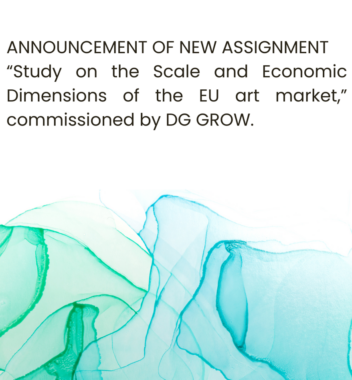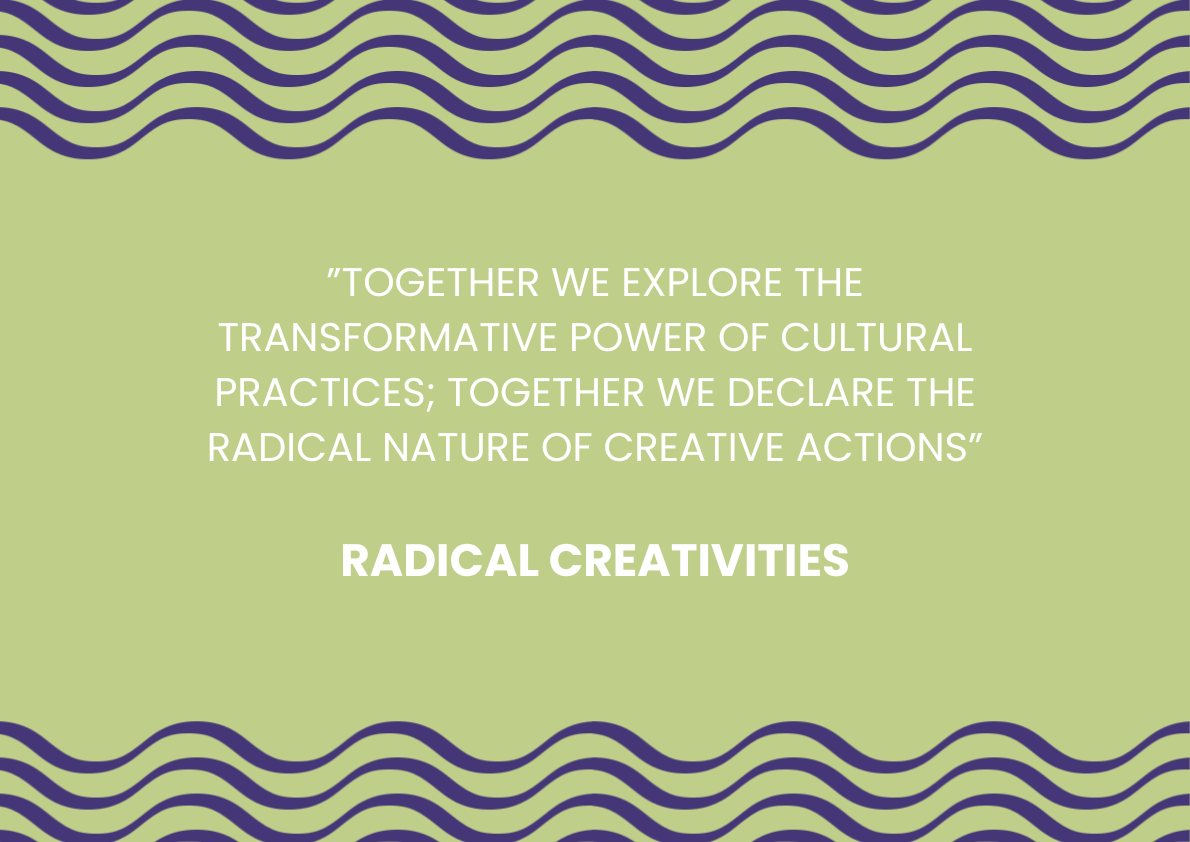
In this edition of our monthly Wrap-Up, we shine a spotlight on the invaluable cultural heritage that shapes Europe’s identity. April marked the celebration of Unesco’s World Heritage Day on April 18th, aiming to raise awareness of the importance of heritage preservation for sustainable development under the 2024 theme “Shared Cultures, Shared Heritage and Shared Responsibility”. As we navigate the complexities of cultural preservation and research, this month’s issue delves into the latest policies, announcements, and events impacting this field.
The common European data space for cultural heritage
In the last Wrap-Up: KEA’s March Cultural Policy Digest, we talked about the controversial, yet increasingly relevant and omnipresent relationship between the CCS and AI. As this month’s issue focuses on cultural heritage and the latest policies, announcements and events affecting this field, it comes naturally to make a connection between cultural heritage and topics related to technology, data, and AI.
Have you ever heard of the common European data space for cultural heritage? Launched in 2022, it constitutes the flagship initiative of the European Commission aimed at accelerating the digital transformation of Europe’s cultural sector, fostering the creation and reuse of content, developing tools and policies to encourage partnerships that enhance innovation, and contributing to an open, creative society.
The data space for cultural heritage, which builds on the Europeana Digital Service Infrastructure (Europeana DSI) and the Europeana Strategy 2020-2025, offers exciting opportunities to innovate in areas like 3D and AI through their running projects, including, for instance, “AI4Culture”, “EUreka3D”, “5Dculture” and “DE-BIAS”. Furthermore, it allows for the discovery of the rich and diverse European cultural heritage, as it provides the audience with a vast online collection of art, books, films and music from thousands of cultural institutions, which can be openly searched, saved, shared and remixed. Finally, institutions can share their own data on the platform, increasing its visibility and accessibility.
The data space for cultural heritage is established through collaboration among a consortium comprising 19 partners spanning nine EU nations. This initiative is steered by the Europeana Foundation and supported by the Europeana Network Association (ENA), a community of over 3,500 experts dedicated to digital heritage and the Europeana Aggregators’ Forum (EAF), representing national, domain-specific, and thematic aggregators. Oversight of this data domain falls under the purview of the Member States through the Commission Expert Group on the common European data space for cultural heritage (CEDCHE).
Have we solicited your curiosity? Then take a look at the common European data space for cultural heritage to discover its collection by theme, topic, century and organisation. Additionally, the full report of the data space’s first year, showcasing the main achievements and highlights of 2022 – 2023, is available.
Crafting a vision for European Cultural Heritage research with ARCHE
Since September 2022, KEA, as the sole private research centre in the consortium, has partnered in a large Horizon Europe-funded project under the acronym ARCHE, which stands for Alliance for Research on Cultural Heritage in Europe. ARCHE, led by the French Fondation des Sciences du Patrimoine, has 18 European countries on board, represented by 24 public or semi-public institutions that include ministries (mostly of culture, education, or environment), national research funding and promotion agencies, universities and research institutions. Our unique role in the consortium is to establish links between cultural heritage institutions (CHI) and the cultural and creative industries (CCI). So, what is the plan?
We start with the assumption that Europe is Europe, among other things (if not primarily), because of its cultural heritage. Europe is made up of similarities and differences between local groups, regions, and countries, all of which are encoded in its DNA, or in other words, tangible, intangible, and lately also digital, cultural heritage. The first consequence of this assumption is that the more we know about this DNA, the better we can protect it and the more we can build on it. Hence, “R” for research in ARCHE. But how do we know which research to support as strategically important? This is where the Alliance comes in.
Through collaborative research, innovative strategies, and the development of a new Strategic Research and Innovation Agenda (SRIA), ARCHE is shaping the future of European cultural heritage research and delve into the blueprint behind the plan.
explore how this alliance fosters cooperation, engages stakeholders, and envisions a resilient future for Europe’s cultural legacy. Access the article here.
The 2023 European Heritage Label Winners Revealed
On April 17th, 2024, EU Commissioner Iliana Ivanova hosted an awards ceremony at the Elisabeth Center in Antwerp, revealing the recipients of the 2023 European Heritage Label. These sites, located across Europe, have played significant roles in shaping the continent’s history and shared principles.
Since its establishment in 2011, the Label has acknowledged various locations that symbolize European unity and cultural richness. It is a distinction conferred by the European Union on sites that have influenced Europe’s historical narrative and communal values. Currently, 67 locations across the continent proudly display this honour, fostering connection and understanding among Europeans.
To receive this label, sites spanning various categories, including monuments, natural and cultural landscapes, memorials, cultural artifacts, and intangible heritage, are eligible. Every two years, each EU member state may nominate up to two sites for evaluation by a panel of experts, leading to official recognition by the European Commission.
For more information on the selection process and to see the list of national coordinators, access here.
Europe’s 7 Most Endangered Heritage Sites 2024
Also on April 17th, Europa Nostra in partnership with the European Investment Bank Institute announced the 2024 List of 7 Most Endangered Heritage Sites in Europe.
Since its inception in 2013, the 7 Most Endangered Programme has been instrumental in preserving endangered heritage sites across Europe. Supported by the Creative Europe programme of the European Union, the initiative aims to combine cultural expertise with technical appraisal and rescue planning skills. So far, 63 threatened monuments and heritage sites from 31 European countries have been selected.
To commemorate the 10th anniversary of the programme in 2023, the EIB released the brochure ‘Saving the Past – Shaping the Future’, showcasing success stories and emphasizing the importance of partnerships and community engagement.
The European Commission is assessing potential exemptions for the use of lead in cultural heritage conservation
Last year, artisans from across Europe have sounded the alarm over the looming threat of a ban on lead in cultural heritage conservation. The European Chemicals Agency (ECHA) is contemplating adding lead, an essential material in numerous traditional crafts, to the list of substances needing authorization under the REACH regulation.
Representing German artisans and serving on the International Scientific Committee for the Conservation of Stained Glass, Ivo Rauch underscored the indispensable role of lead in restoring and crafting culturally significant items like stained glass and historical musical instruments. The petition calls for an exemption, stressing lead’s pivotal role in upholding Europe’s rich cultural heritage.
MEPs Jean-Paul Denanot (S&D), Edouard Martin (S&D) and Michèle Rivasi (Verts/ALE) had already brought the topic to the Commission’s attention in 2017, asking to reconsider exemptions in light of new scientific data on lead migration and alternative materials, aiming to protect both cultural heritage and the health of craftspeople. In 2022, MEPs François-Xavier Bellamy (PPE) and Nathalie Colin-Oesterlé (PPE) again tackled the subject citing Article 58 of the REACH Regulation which allows exempting the use of lead for cultural heritage purposes from the authorisation requirement.
Now, according to the Heritage Tribune, responding to these concerns, the EC is carefully weighing the need for exemptions to ensure its continued use in cultural preservation efforts. This unfolding dialogue brings to the forefront a broader discussion on striking a delicate balance between public health and the preservation of cultural objects. Stay tuned for further updates on this matter.
Preserving cultural heritage from armed conflict
In May, we will celebrate the 70th anniversary of the 1954 Hague Convention for the Protection of Cultural Property in the Event of Armed conflict and its First Protocol. It is also the 25th Anniversary of the Second Protocol, which seeks to complement the provisions of the Hague Convention. As of today, the 1954 Hague Convention has been ratified by 135 countries, the First Protocol by 112, and the Second Protocol by 86. These treaties paved the way for the development of a specific branch of international humanitarian law aimed at protecting cultural heritage from the destruction caused by war, and some parts of the Convention are now considered international customary law.
For the first time, the concept of “cultural property“ or “cultural heritage“ has been given a clear legal basis in international law. The 1954 Convention also emphasises the fundamental value of culture, stating that “damage to cultural property belonging to any people whatsoever means damage to the cultural heritage of all mankind, since each people makes its contribution to the culture of the world“. Furthermore, this treaty establishes protection mechanisms, as States Parties agree that they are “determined to take all possible steps to protect cultural property”, and lays the groundwork for prosecutions in international courts. In this respect, UN Resolution 2347, adopted in 2017, goes further, stating that in certain circumstances, the intentional destruction of cultural heritage may constitute a war crime.
Today, the intensification and proliferation of high-intensity conflicts around the world once again raises the issue of preserving our cultural heritage. This is particularly true in Ukraine, where UNESCO has verified damage to 351 sites since the beginning of the war – 129 religious sites, 157 buildings of historical and/or artistic interest, 31 museums, 19 monuments, 14 libraries, and 1 archive.
At its level, KEA is also fully involved in supporting Ukraine, notably through its participation in the Culture Policy Lab, a series of seminars and brainstorming sessions to contribute to Ukrainian recovery through culture and cultural policies, hosted by the ERSTE Foundation in Vienna and the Ministry of Culture and Information of Ukraine. The first session of this format took place in December 2022 and was precisely entitled Preserving Cultural Heritage in Ukraine.
For more information on the various events linked to this anniversary, visit the UNESCO website.























































































